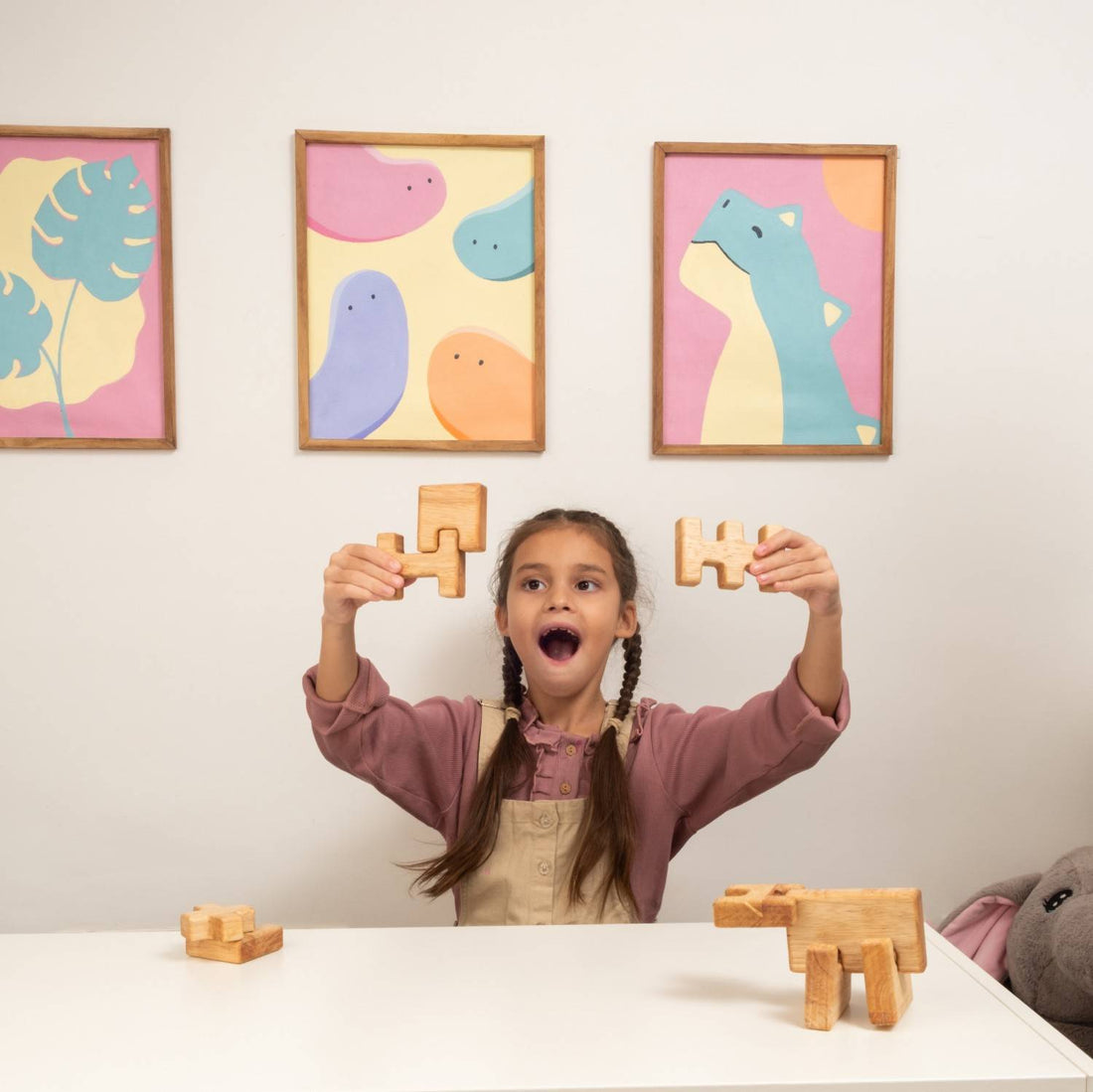Wooden toys are more than just playthings—they are powerful tools for stimulating brain development in children. Through hands-on exploration and imaginative play, wooden toys engage multiple areas of the brain, promoting neural connectivity, and synaptic growth. In this article, we'll explore how wooden toys support healthy brain development and lay the foundation for lifelong learning.
The Science of Brain Development
During early childhood, the brain undergoes rapid growth and development, with billions of neural connections forming every second. These connections, or synapses, are essential for transmitting information between brain cells and shaping cognitive, social, and emotional development. Stimulating experiences during this critical period can have a profound impact on brain architecture and function, setting the stage for future learning and behaviour.
The Role of Play in Brain Development
Play is a natural and essential activity for young children, serving as a primary means of exploration, learning, and self-expression. When children engage in play, they activate various regions of the brain involved in sensory processing, motor coordination, problem-solving, and emotional regulation. Play experiences help strengthen neural connections and pathways, fostering cognitive flexibility, creativity, and resilience.
Wooden Toys A Brain-Friendly Choice
Wooden toys offer numerous benefits for brain development due to their simplicity, durability, and versatility. Unlike electronic toys that provide passive entertainment, wooden toys encourage active, hands-on engagement, stimulating multiple senses and motor skills. Whether building with blocks, sorting shapes, or playing with puzzles, children are actively involved in the learning process, promoting neural plasticity and adaptability.
Stimulating Neural Pathways
Wooden toys engage children in a variety of activities that challenge their brains and promote neural connectivity. Building with blocks, for example, strengthens spatial reasoning skills and hand-eye coordination, while sorting and stacking activities enhance problem-solving abilities and executive function. As children manipulate wooden toys, they create new neural pathways and reinforce existing ones, facilitating efficient information processing and learning.
Promoting Synaptic Growth
The repetitive actions and varied experiences offered by wooden toys support synaptic growth and refinement in the brain. Each time a child engages with a wooden toy, whether through stacking, sorting, or imaginative play, neurons fire and wire together, strengthening connections and laying the groundwork for future learning. Over time, these synaptic connections become more efficient and sophisticated, supporting higher-order thinking skills and intellectual growth.
Conclusion
Wooden toys play a vital role in promoting healthy brain development in children, providing rich sensory experiences and stimulating activities that nurture neural connectivity and synaptic growth. By engaging in hands-on exploration and imaginative play with wooden toys, children strengthen essential cognitive, social, and emotional skills, setting a solid foundation for lifelong learning and success. As parents, educators, and caregivers, we can harness the power of wooden toys to support children's brain development and unlock their full potential.
